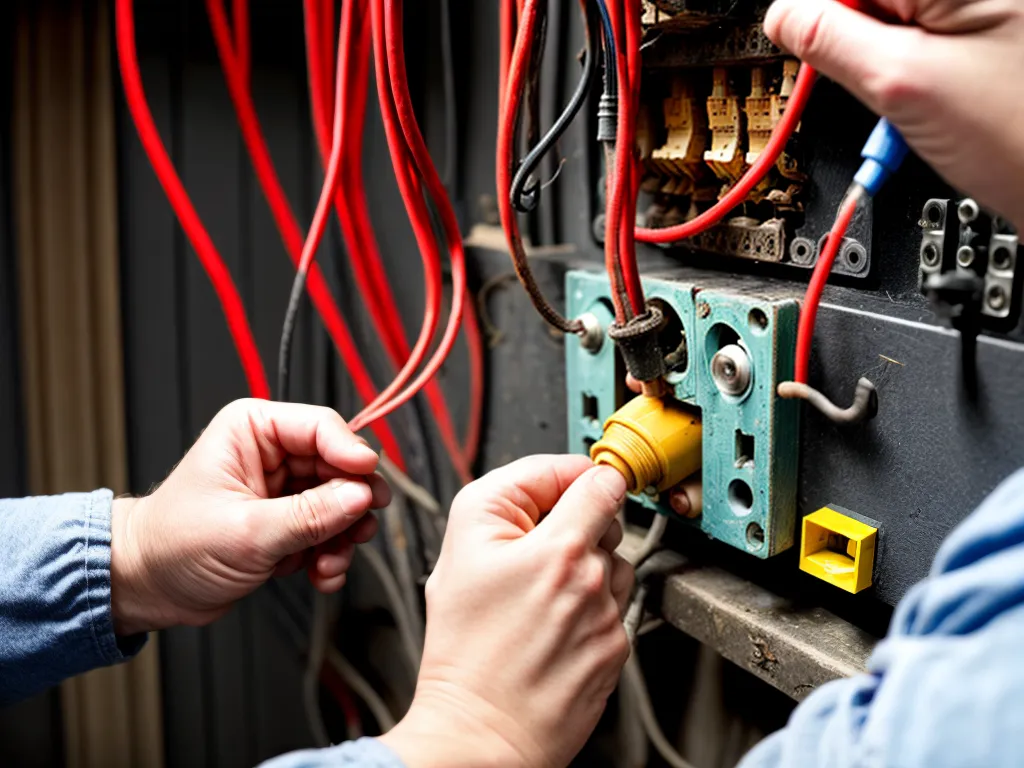
How to Safely Work With Old Knob-and-Tube Wiring
What is Knob-and-Tube Wiring?
Knob-and-tube wiring was commonly installed in homes built before the 1940s. It consists of individual wires that are run through the wall cavities, with ceramic knobs used to hold the wires in place and tubes to protect the wires as they pass through framing members.
Some key characteristics of knob-and-tube wiring:
-
Insulation: The wiring is uninsulated, with just a protective coating on the conductor. This makes it more prone to short circuits if wires make contact.
-
Wiring method: Each wire is run individually, rather than bundled together in a cable. This can make it more difficult to trace circuits.
-
Materials: Early versions used cloth-insulated wiring, which breaks down over time. Later installs used rubber insulation which holds up better.
-
Capacity: Knob-and-tube circuits are often only 15 or 20 amps, insufficient for today's electrical loads.
-
Grounding: No equipment grounding conductor was included. This can be a safety issue.
Dangers and Limitations of Knob-and-Tube Wiring
While knob-and-tube wiring was state-of-the-art in its time, it does not meet modern electrical standards and can pose safety risks including:
-
Fire hazard: The insulation breaks down over time, increasing the chances of short circuits and arcing faults which can ignite fires. This risk increases as the wiring ages.
-
Shocks and electrocution: With no grounding conductor, a fault in an appliance or tool can energize exposed metal parts, leading to potentially fatal shocks.
-
Overloading circuits: Heavier loads from modern appliances can overload the capacity of knob-and-tube circuits and cause failures.
-
Difficulty with repairs and additions: It can be challenging to tap into existing knob-and-tube circuits to add new fixtures or outlets.
-
Inability to use modern electrical equipment like ceiling fans or air conditioners which may exceed the capacity limitations of the wiring.
Evaluating Your Knob-and-Tube Wiring
If your home has knob-and-tube wiring, it's important to have it thoroughly evaluated by a qualified electrician before undertaking any major electrical work. Things they will assess include:
- The overall condition of the wiring insulation. Brittle and cracked insulation indicates deterioration.
- Any improper splicing, loose connections or places where insulation is damaged or missing. These increase fire risk.
- Signs of overheating like discolored wires or melted knobs. This may indicate undersized wiring or excessive loads.
- Any improper modifications, shortcuts or unsafe connections made over the years. These should be corrected.
- Presence of grounding and polarity - lack of proper grounding is a major safety issue.
- Locations with wiring run in contact with combustible materials like insulation or wood. This is a fire hazard.
- Adequacy of wire sizes for the electric loads. Undersized wiring causes safety issues.
The electrician can then advise you on any wiring that needs replacement for safety, or if your entire system should be upgraded to modern standards.
Safe Options for Upgrading Knob-and-Tube Wiring
If your knob-and-tube wiring is deteriorated or insufficient for your electrical needs, upgrades should be made. Some safe options include:
-
Full rewire: Replacing all knob-and-tube Branch circuits with new properly grounded NM cable and breakers. This thorough option may be recommended for severely degraded wiring.
-
Individual circuit upgrades: Targeted upgrades of specific overloaded or hazardous branch circuits, while leaving other knob-and-tube intact. This may work for systems in fair condition.
-
Running new wiring alongside old: Sometimes new grounded NM cable can be run alongside old knob-and-tube to add capacity while limiting demolition.
-
Pigtailing: Attaching grounded cables to receptacles and switches, then connecting short pigtails to the old wiring. This adds grounding safely.
-
Installing GFCI protection: GFCIs can provide protection from shocks even on ungrounded wiring. However, they don't fix other fire and overload issues.
Always use a licensed electrician when making any modifications to electrical systems. Never attempt dangerous "DIY" repairs of knob-and-tube yourself.
Working Safely With Existing Knob-and-Tube Wiring
If you have knob-and-tube wiring that is still in good condition, you can safely work with it using these precautions:
-
Never overload circuits - be mindful of capacity limits and avoid using high-draw appliances. Use heavy-duty extension cords to spread loads over multiple circuits.
-
Do not conceal wiring behind new insulation, walls, or ceilings. This can cause overheating. Only cover with materials approved for the purpose.
-
Do not make any modifications yourself like tapping into circuits or splicing - hire an electrician to work safely.
-
Check for degradation like cracked insulation. Flag any wiring that may need replacement for the electrician.
-
Shut power off and use caution when doing any work around knob-and-tube circuits. Take care not to contact or damage the aging wiring.
-
Use GFCI protected outlets in bathrooms, kitchens, and other high-risk areas to prevent shocks. Test them monthly.
-
Address any tripping breakers - these likely indicate overloaded and/or deteriorated circuits. An electrician should assess.
Staying alert to hazards, avoiding overloads, and hiring professionals will allow you to manage old knob-and-tube wiring safely as you consider upgrading. Never take risks with electrical safety in your home.